Tonbridge is an ancient market town located in the county of Kent, England. In the heart of the town is the Corpus Christi Church, where we went a few months ago to install a new altarpiece and a tabernacle made in our workshops.
AN ALTARPIECE FOR THE CHRIST OF TONBRIDGE
Our project team was commissioned to design a wooden altarpiece to house a historic crucifix owned by the church and to create a distinctive and harmonious decorative background for the presbytery of the church.
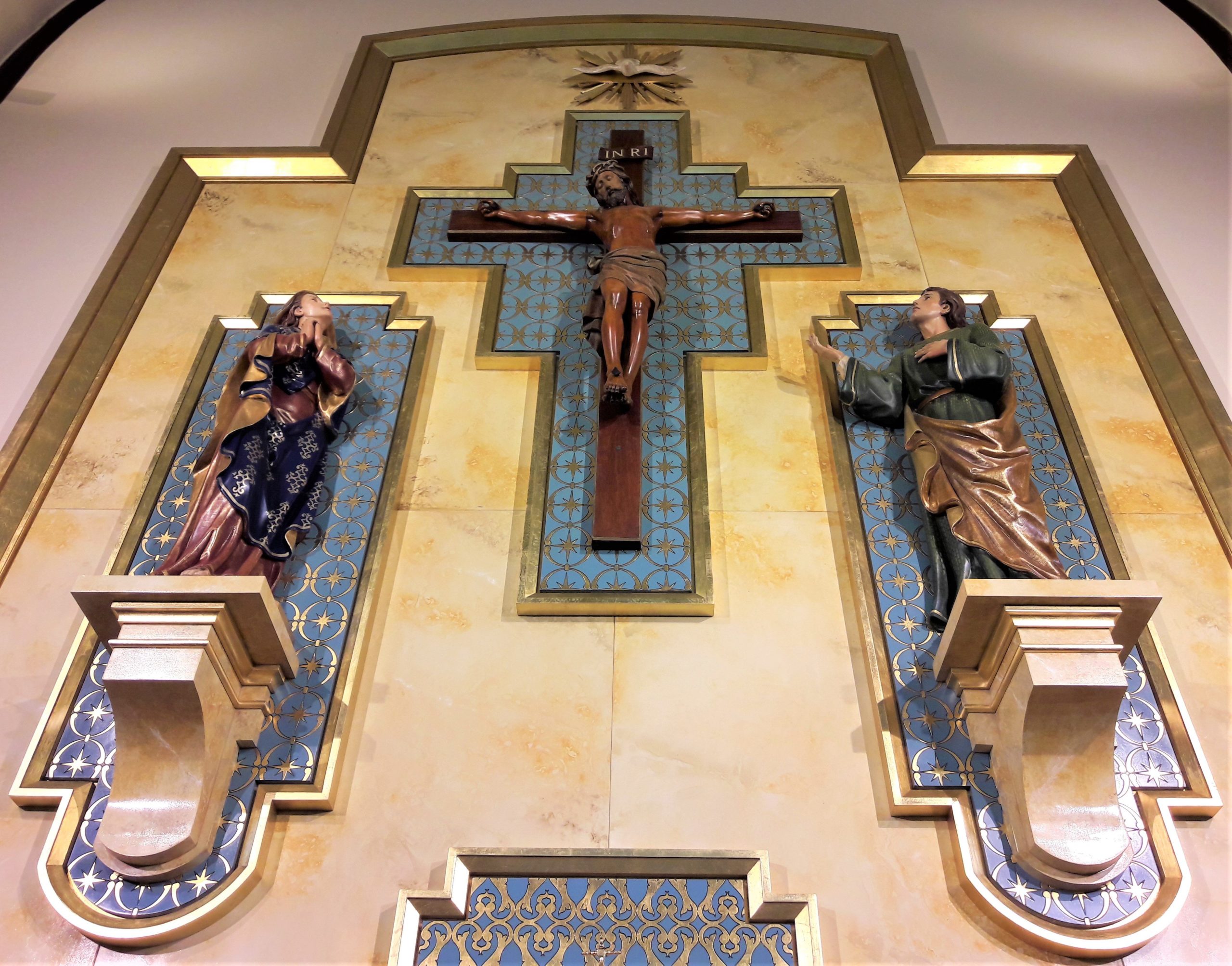
Redesign of the church chancel by Arte Granda
A NEW SCULPTURAL ENSEMBLE TO ACCOMPANY THE CHRIST
The altarpiece, made of polychrome wood, is ornamented with moldings gilded with German gold and details with marbleized finish. This structure serves as a frame for the carvings of Our Lady and Saint John, also newly created, which accompany Christ on both sides. Above the sculptural group is another carving, of smaller size, of the Holy Spirit represented, as is usual in Christian iconography, as a dove.
For the realization of this large piece, which supports the old carving of Christ and the new carvings added, it has been necessary the intervention of sculptors, polychromators, gilders and carpenters, who with their work have contributed to create the complete structure.
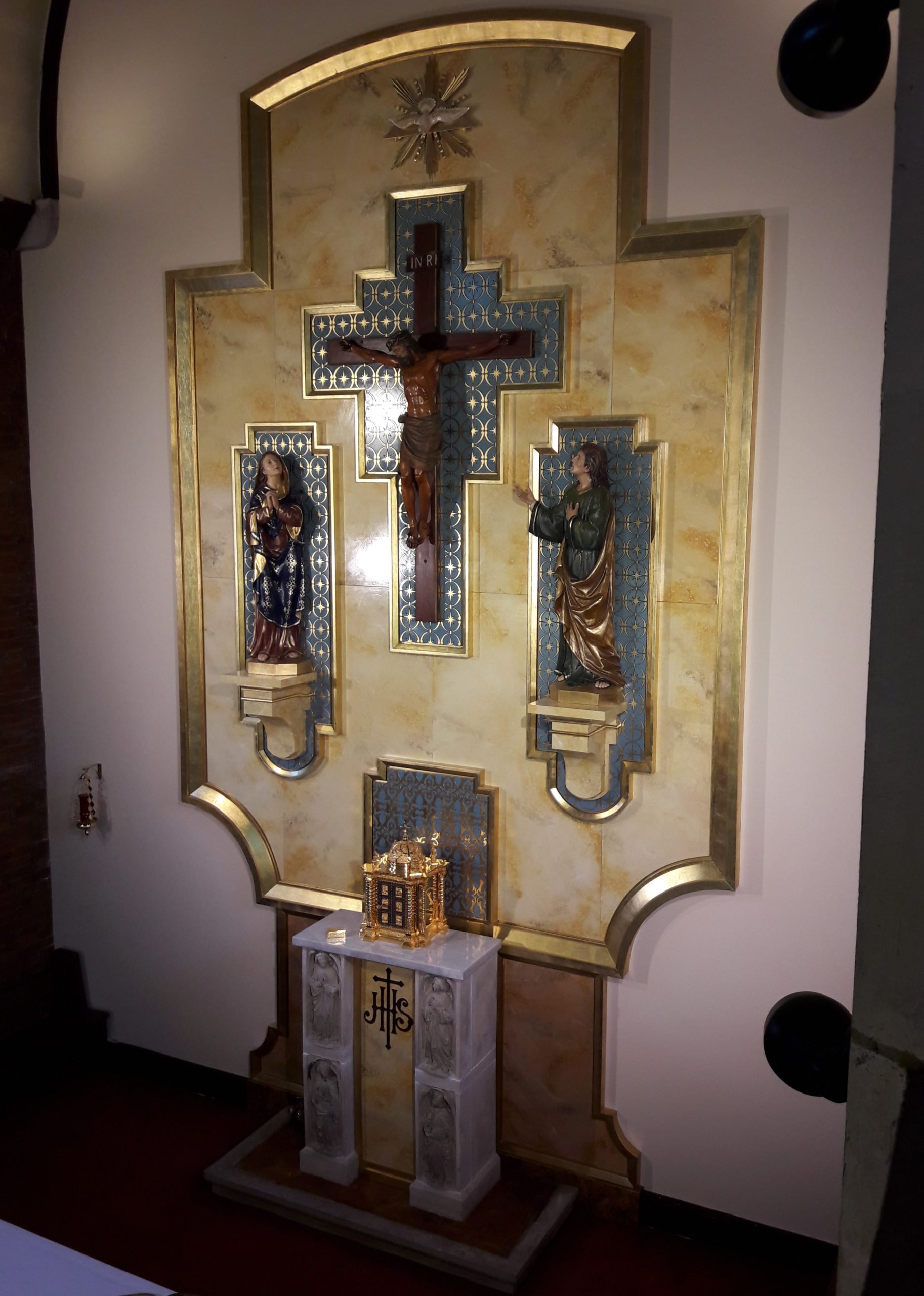
Sculptural ensemble made to accompany the image of Christ.
THE SAGRARIUM
Occupying a central and prominent position, we find, as in every Catholic church, the tabernacle, the main element of the temple. In this case, a vaulted tabernacle was designed, made of gilded metal, with several scenes of the Passion of the Lord depicted on the door. In addition, the pedestal is enriched with the IHS and a chrism that has been placed on the altar.
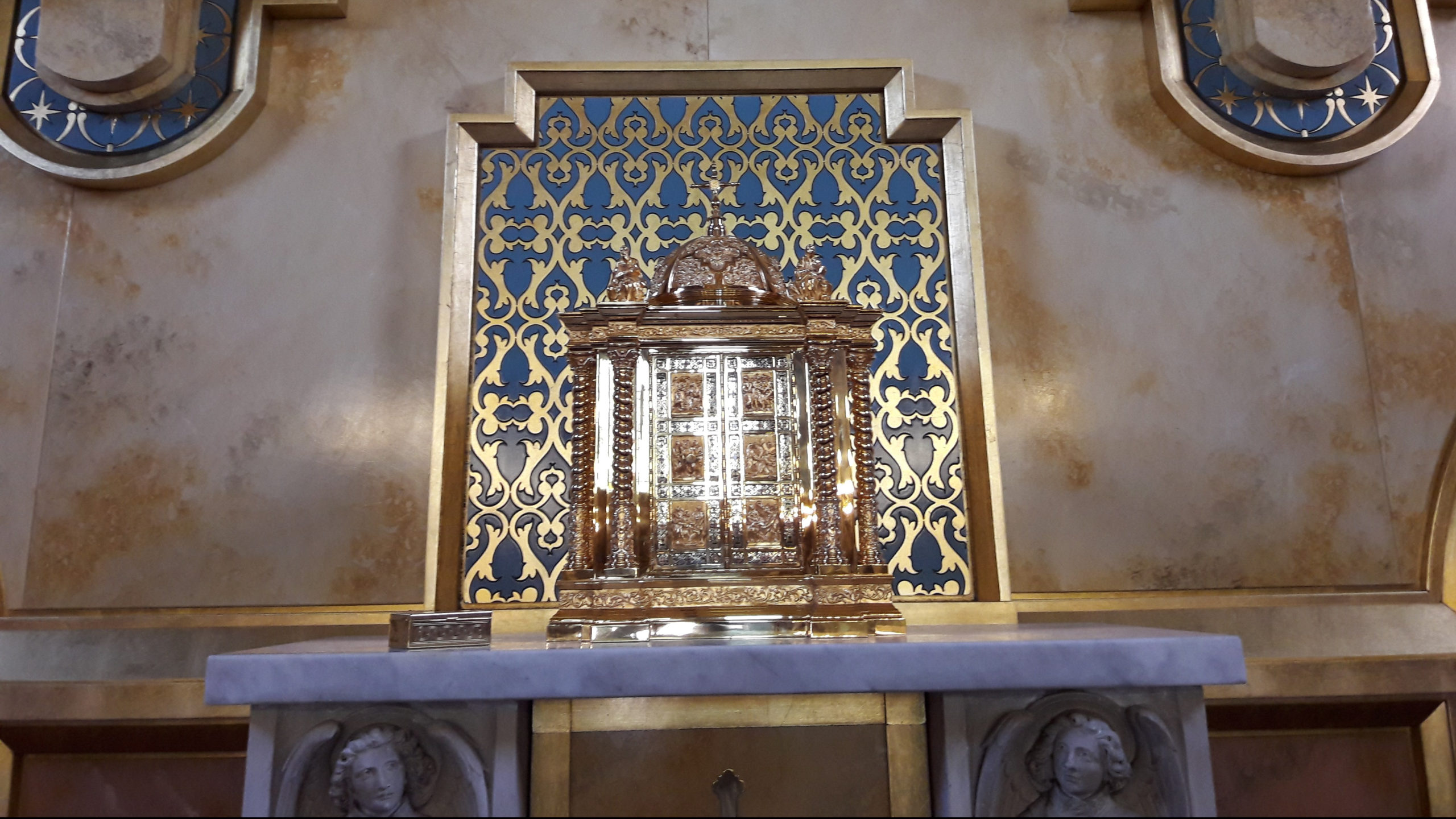
Tabernacle made for Corpus Christi Church
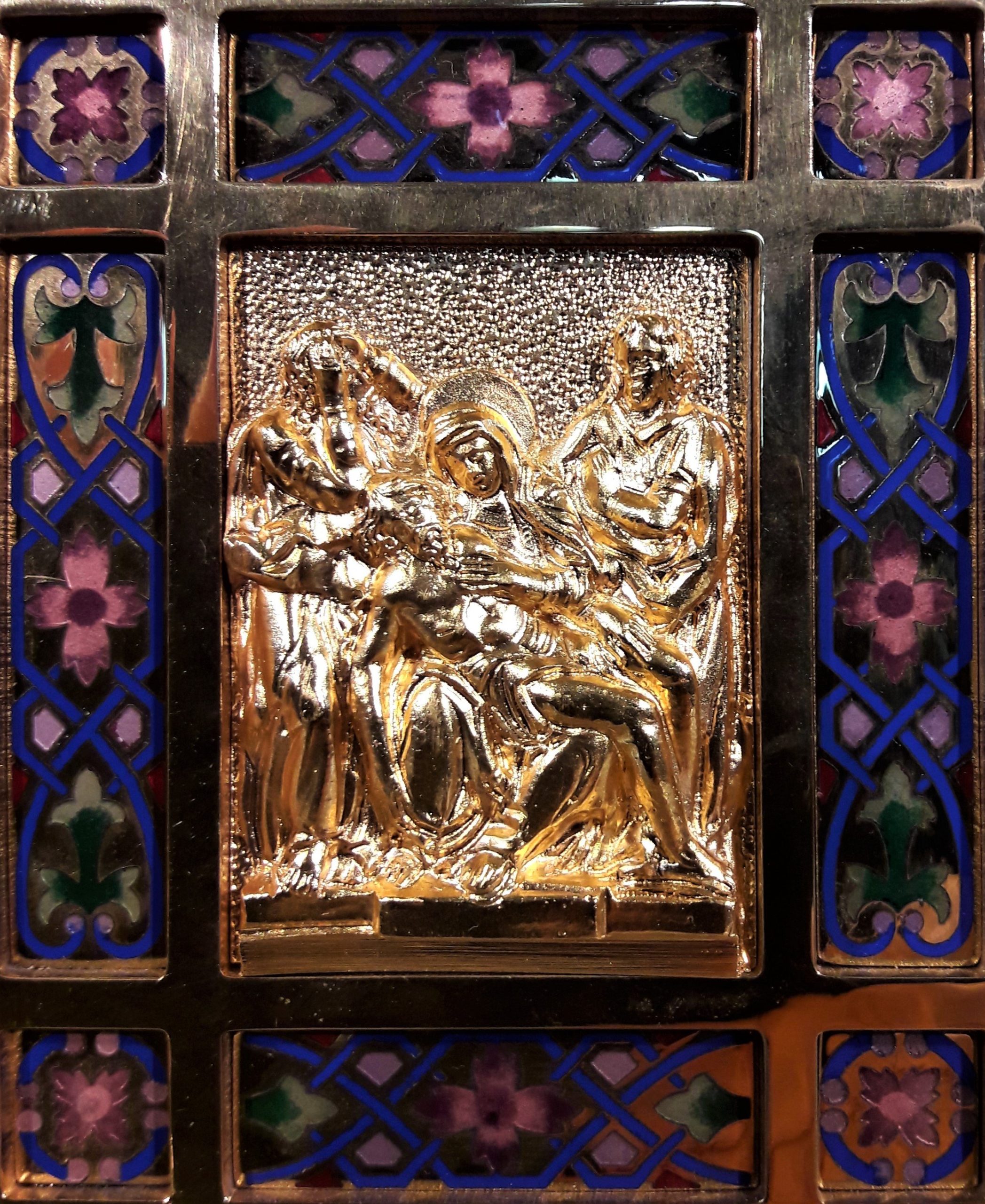
Detail of the door of the tabernacle, representing the Passion of the Lord.
THE BLESSING OF THE NEW ELEMENTS OF THE CHURCH
On September 15, Archbishop Peter Smith blessed the altarpiece and the new tabernacle, allowing its use for worship in the church. Here are some pictures of the celebration.
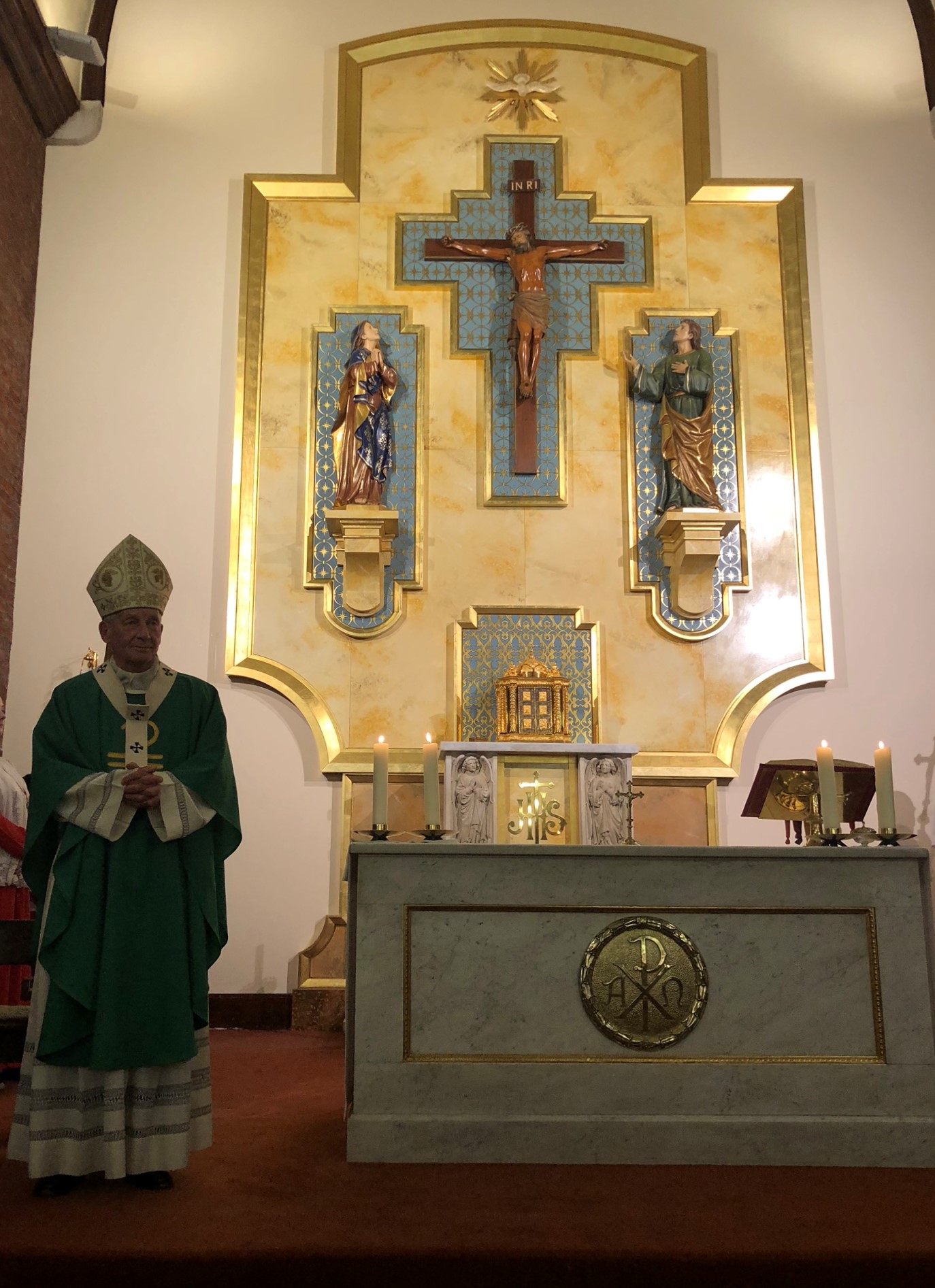
Archbishop Peter Smith during the blessing ceremony.
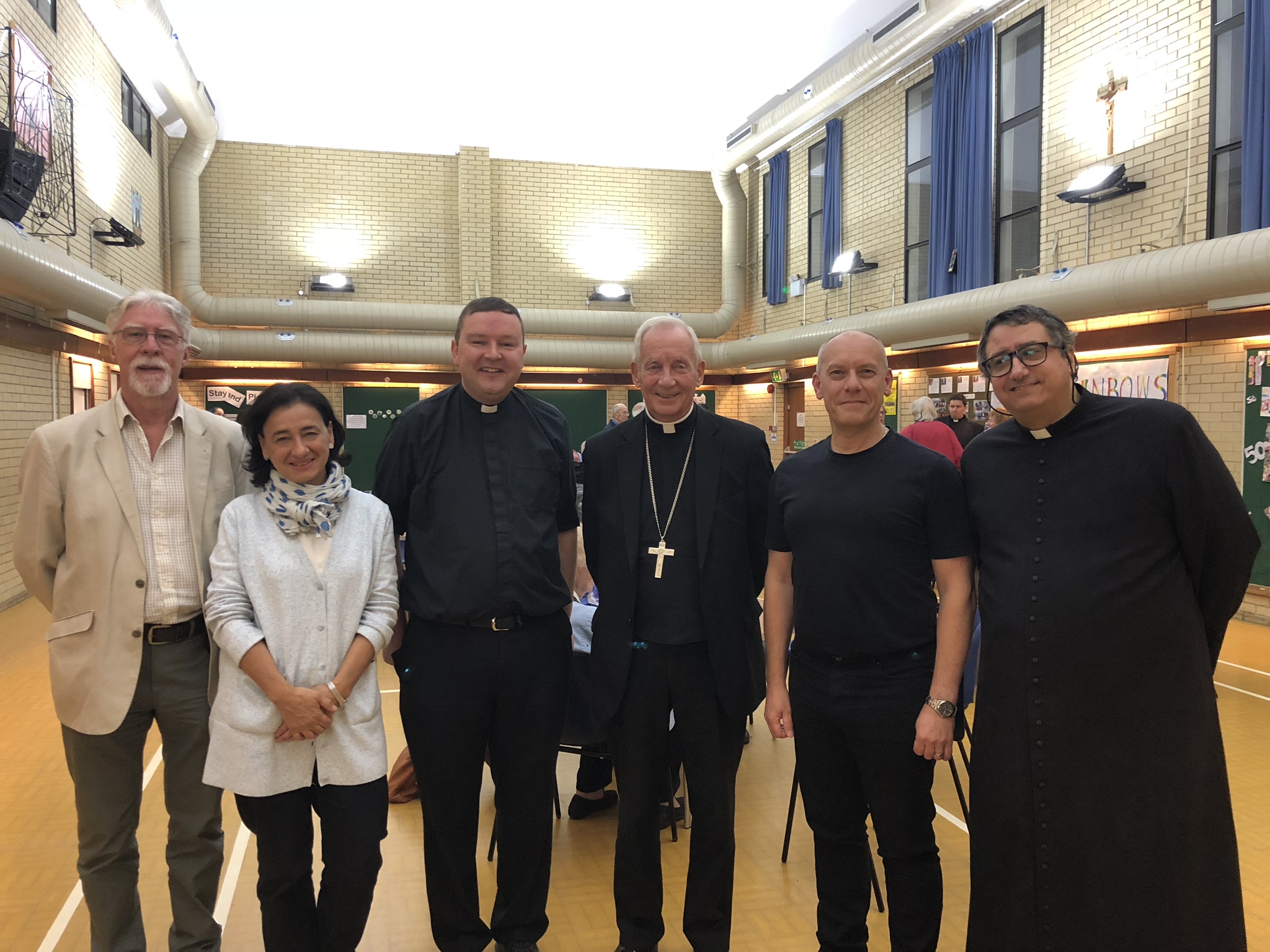
Members of the Tombridge church after the ceremony.
CORPUS CHRISTI CHURCH, A HISTORICAL BUILDING
Corpus Christi Church stands today on the site where the first Catholic chapel was built after the Tonbridge Reformation in 1904. Shortly after the chapel was finished, an anonymous donor gave the church a large sum to build a new, larger church there to symbolize the Catholic presence in the city.
The building, designed by William Barnsley Hughes, was completed in 1906. The church contains stained glass windows of great artistic value from the school of William Morris, associated with the British Arts and Crafts Movement (British Arts and Crafts Movement) and its structure is defined by an elongated roof and galleries that are distributed on both sides of the nave and that meet at the rear, where the organ is located.
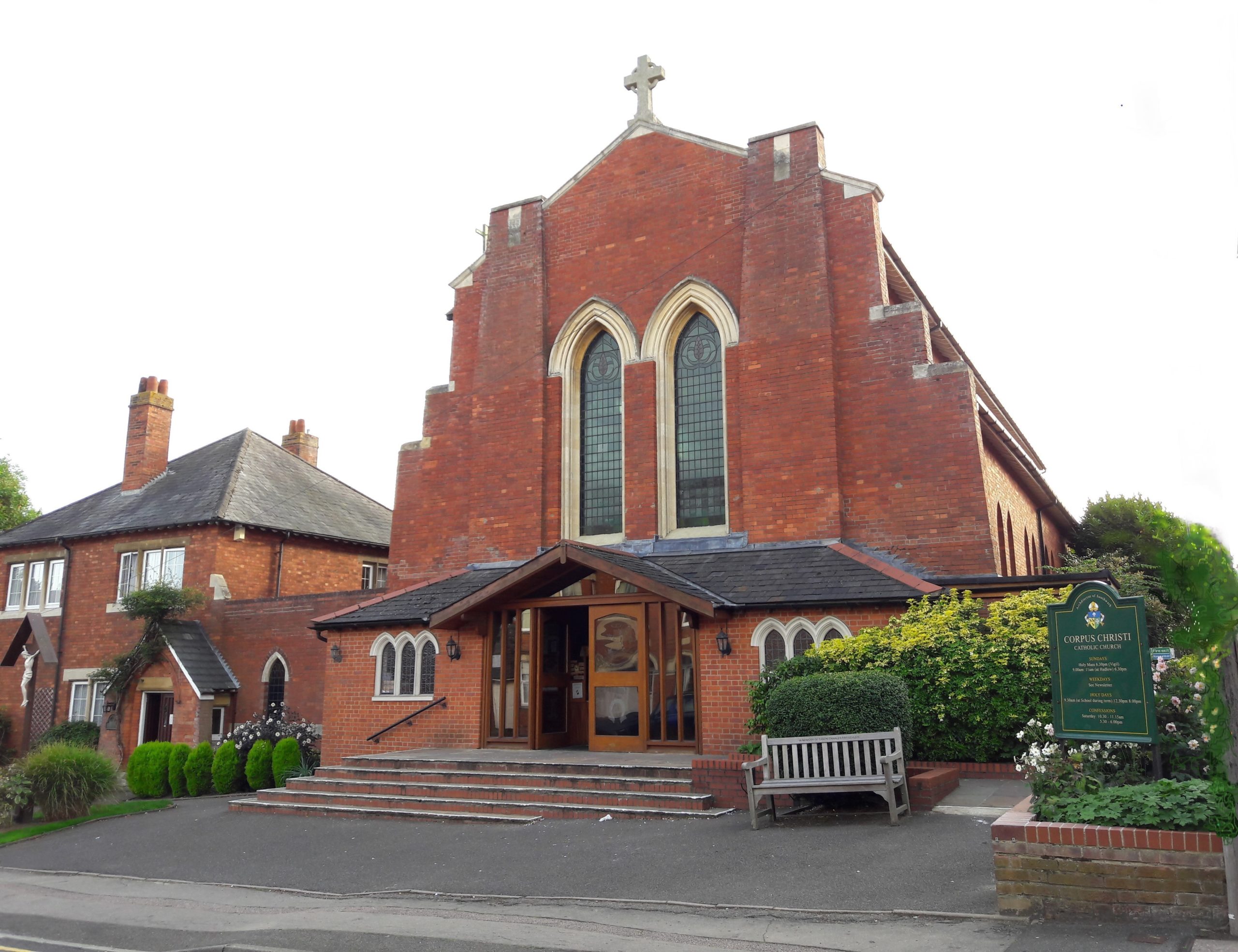
Church exterior (Tonbridge, United Kingdom)
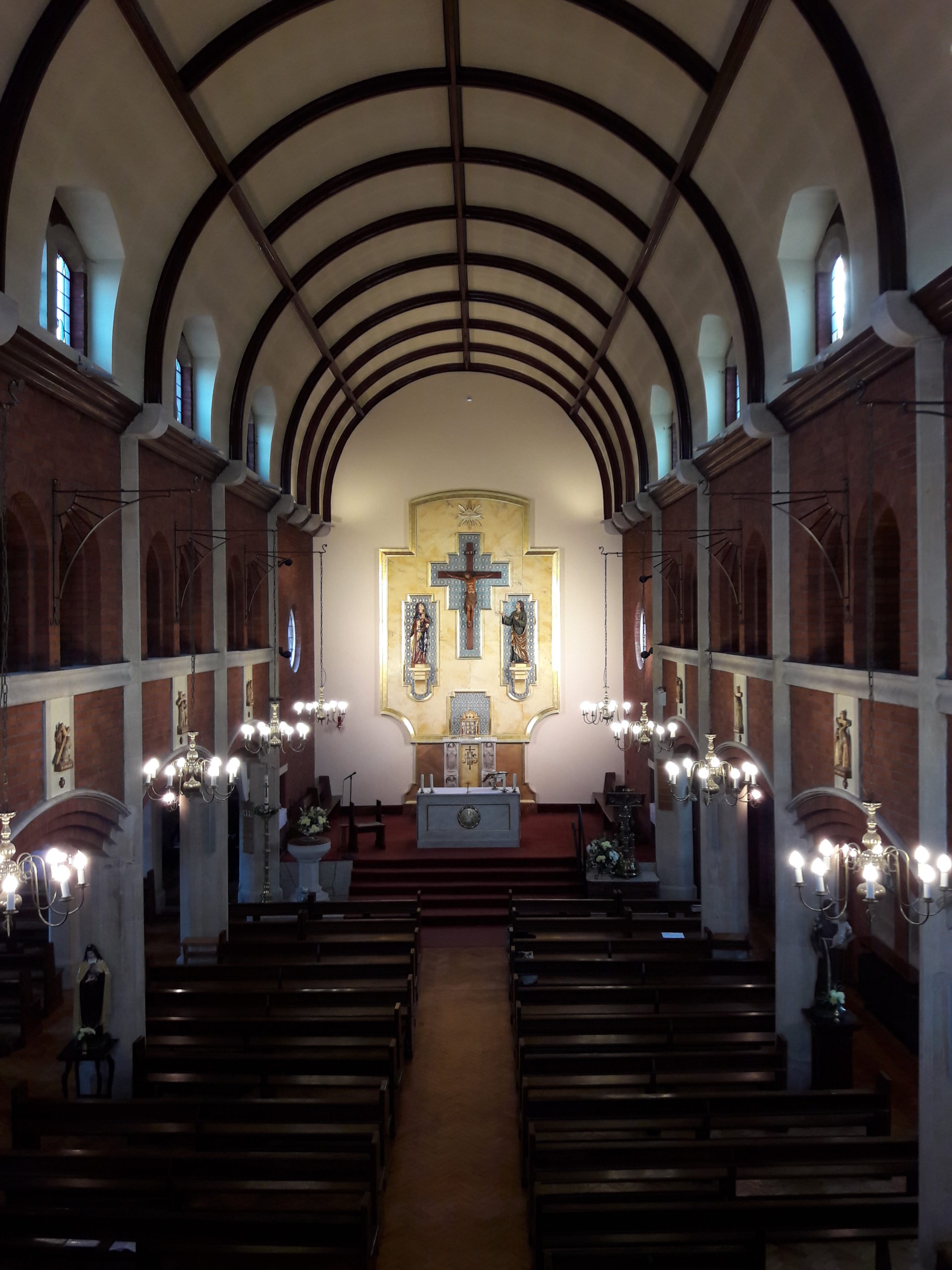
Interior of the church after the placement of the altarpiece and the new tabernacle.
